- Register
- Log in to Tune-In
- Wishlist (0)
-
Shopping cart
(0)
You have no items in your shopping cart.
Beatles News

George Harrison made his way into the Rock & Roll Hall of Fame despite not having much support from his Beatles bandmates or producer George Martin. The so-called quiet Beatle made it as a member of the Fab Four and a solo artist. George’s friend Jeff Lynne made it to the Rock Hall with his group Electric Light Orchestra, but he beat Harrison into another musical hall of fame.
George, of course, gained fame with The Beatles in the 1960s. Even though his songs didn’t appear on Fab Four records as frequently as Paul McCartney and John Lennon tunes, his were some of the band’s best. See, for example, “Taxman,” “While My Guitar Gently Weeps,” and “Something.”
Lynne co-founded ELO and was their chief songwriter throughout their career. Many of the band’s standout songs, such as “Don’t Bring Me Down,” “Mr. Blue Sky,” and “Livin’ Thing,” were his tunes. Their string-heavy pop music was incredibly popular in the 1970s, but like most bands, ELO never gained the same notoriety as The Beatles.
Source: Jason Rossi/cheatsheet.com
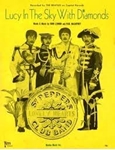
Queen's Brian May cited The Beatles' "Lucy in the Sky with Diamonds" as one of the great masterpieces in the history of art.Queen’s Brian May is a huge fan of The Beatles‘ “Lucy in the Sky with Diamonds.” On the other hand, John Lennon wished he could have rerecorded the track. Both of them had an unbalanced view of the tune.
During a 2020 interview with Loudersound, May said John was the most talented member of The Beatles. He named some of his favorite songs that John wrote.
“There is not enough space here to come closes to chronicling all Lennon’s masterpieces, but check out ‘Tomorrow Never Knows,’ ‘Lucy in the Sky with Diamonds,’ and then ‘I Am the Walrus’ and ‘Strawberry Fields Forever’ and tell me you do not gasp,” he said. “Never has anything been created like these works in the whole of history.”
Source: Matthew Trzcinski/cheatsheet.com
details
Paul McCartney gave 1 album a strange title. He explained that he got the idea from an insult John Lennon said to him.After The Beatles broke up, John Lennon and Paul McCartney couldn’t even get through a phone call without fighting. McCartney explained that Lennon’s vitriol was palpable. Even though he’d known his former bandmate for years, he felt frightened. On one phone call, though, McCartney walked away with some creative inspiration.Even though his bandmates were furious with him after The Beatles’ breakup, McCartney tried to maintain a relationship with them. He said he frequently called Lennon, but the calls didn’t often go well.
Source: Emma McKee/cheatsheet.com
details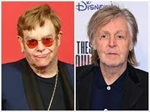
Glastonbury fans believe they may have uncovered the identity of one of Sir Elton John’s four guest collaborators during his headlining act. John is set to perform his last ever UK show at the Worthy Farm festival on Sunday 25 June, which also marks his debut on the Pyramid Stage.
While the musical acts began on Friday 23 June, Glastonbury co-founder Emily Eavis opened the festival gates to attendees on Wednesday 21 June. This year’s hefty line-up includes performers such as Lana Del Ray, Lizzo, and Cat Stevens, with headlining acts by Arctic Monkeys, Guns N’ Roses, and John.
During an interview with Sky News last week, John’s husband, the filmmaker David Furnish revealed the “Rocket Man” singer will bring on four special guests “of his choosing” during his landmark set.
When asked about the identity of these stars, Furnish said he was “sworn to secrecy” but hinted that John’s setlist for Sunday has “a lot of changes”. After fans spotted Sir Paul McCartney at Glastonbury, enjoying the Foo Fighters’s not-so-secret gig, they began speculating The Beatles star might be one of John’s surprise acts.
Source:Maanya details
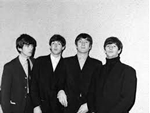
While Ringo Starr was sick, a new drummer stepped in for The Beatles. He was shocked that their public images didn't match what they were really like.The Beatles caused a bit of controversy when they first rose to prominence, but their public image was much cleaner than many of the bands that came after them. They wore neat suits and charmed the press with their humor. Behind the scenes, though, they lived a more rock ‘n’ roll lifestyle than some might expect. According to Ringo Starr’s temporary replacement drummer Jimmy Nicol, The Beatles spent many of their nights in a haze of women and alcohol. In order to appeal to a wide array of people, Beatles manager Brian Epstein wanted to make them seem friendly and approachable. The image fit them well, but certain details of their private lives might have surprised fans, according to Nicol. He joined the band on tour while Starr had tonsillitis.
Source: Emma McKee/cheatsheet.com
details
While getting five superstars together to form a group seems impossible, George Harrison had little trouble getting other music legends to join the Traveling WilburysWhile George Harrison had an incredible solo career after The Beatles, he briefly formed a supergroup called The Traveling Wilburys. While the group had a limited run, it was still a legendary collaboration that featured rock icons such as Bob Dylan, Tom Petty, Jeff Lynne, and Roy Orbison. While getting all five of those legends together seemed impossible, Harrison quickly formed the quintet.
Harrison was an icon worldwide just for being a part of The Beatles. Many artists wanted to work with him, not only because he was a Beatle, but also because he was a tremendous guitar player and songwriter. However, artists like Petty and Lynne were all busy with their own projects. Dylan almost exclusively worked by himself.
Source:Ross Tanenbaum/cheatsheet.com
details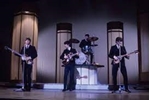
More than 60 years after they formed, here are just 9 reasons why The Beatles are still considered by most to be the greatest recording artists of all time. To date, the Beatles have sold over 1 billion records. They boast 20 No. 1 hits in the United States, (19 No. 1 albums), with 24 consecutive Top 10 hits from 1964 to 1976, a record for a group. According to the United World Chart, the Beatles have 16 of the 100 most successful tracks of all time, and also seven of the 100 most successful albums in history. Paul McCartney’s song ‘Yesterday’ is the most covered song in history, and has been recorded over 3,000 times. Nine of the Beatles’ 12 studio albums are in Rolling Stone‘s 500 Greatest Albums of All Time. They have 12 of the Top 500 songs of all time, again according to Rolling Stone — the most of any artist by far. According to stacker.com, 21 of the top 50 most covered songs of all time are Beatles songs They revolutionized the science of recording, using multiple tracks instead of playing live and experimenting with sound effects. They achieved all of this in just seven years.
Source: crowrivermedia.com
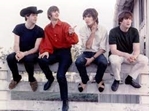
Beatles engineer Geoff Emerick said Ringo Starr had a talent for sparking new creative ideas in his bandmates from behind his drum kit.
The Beatles didn’t play sports, but they were a team, and every member had a role. Ringo Starr kept time on his drum kit and came up big on one of the band’s most enduring songs. But drumming wasn’t his only talent. According to someone who worked with the Fab Four, Ringo brought a secret skill to The Beatles that helped them in ways no one could have known.
Ringo was never the creative center of the Fab Four. He knew it and accepted it. But the drummer still played a crucial role in making the magic.
It’s no secret that The Beatles used drugs during their heyday. It started with Bob Dylan introducing them to marijuana. The quartet later dabbled in other substances. Using drugs became part of their creative routine. The band found a secret, scary spot in Abbey Road Studios to smoke up during their recording sessions. Yet the consumption didn’t always lead to creative breakthroughs.
Source: Jason Rossi/cheatsheet.com

It was once a thriving maritime hub, including for the transatlantic slave trade, but after years of industrial decline, Liverpool's economy is getting a boost from its most famous sons.
"This is the most important house of the most important band of contemporary music," Magical Mystery Tour guide Dale Roberts tells tourists outside the terraced home where The Beatles' Paul McCartney grew up.
McCartney lived at 20 Forthlin Road before he became one of the "Fab Four" -- along with John Lennon, George Harrison and Ringo Starr -- and a worldwide superstar.
The red-bricked property is now run by heritage body the National Trust, as is Lennon's former home at 251 Menlove Avenue. Both sites are regulars on tourist trails for fans of the band.
Like other towns and cities across the UK, Liverpool, a port city in northwest England, is facing a cost-of-living crisis.
Its economy is based on "football and The Beatles", says marketing manager Victoria McDermott, whose employer runs the tour and owns the Cavern Club where The Beatles cut their teeth in the early 1960s.
Source: Véronique DUPONT/yahoo.com

The Beatles had their fair share of up-tempo rockers. They could (and did) excite rooms full of fainting fans with power chords and a floor-filling beat. But, elsewhere in their vast catalog are more subdued numbers. Though they may not be as audacious, their ballads hold an immense amount of weight. They commented on everything from Civil Rights, to the afterlife, to loneliness, and more.
We rounded up some of the Beatles’ best ballads throughout their storied career. Revisit these down-tempo gems below.
1. “And I Love Her”
Starting with an early Beatles offering, “And I Love Her” appears on the group’s third album, A Hard Day’s Night. It’s a simple ballad, evocative of Paul McCartney’s songwriting style in the early days of the Beatles’ career.
Though McCartney would go on to make more weighty ballads during the Beatles’ tenure, this song started him down his path as an expert balladeer.
Source: Alex Hopper/americansongwriter.com

John Lennon, an iconic figure in the world of music, revolutionized the very essence of rock and roll, leaving an indelible mark on generations to come. As one of the founding members of The Beatles, Lennon’s distinct voice and profound songwriting abilities continue to captivate audiences even today. From his early days as a charismatic Liverpool lad to his transcendence into a peace activist and thought-provoking artist, Lennon’s musical repertoire remains a testament to his enduring legacy.
In this article, we embark on a soul-stirring journey to explore the top ten best John Lennon songs of all time. These tracks not only showcase Lennon’s artistic prowess but also provide a glimpse into his evolving ideologies, heartfelt emotions, and unwavering commitment to making a difference through his music. As we delve into the timeless melodies that defined his career, we discover the magic that lies within his words, the intensity that resonates in his voice, and the raw vulnerability that shaped his artistry.
Source: Samuel Moore/singersroom.com
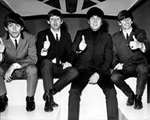
The Beatles didn’t change the world overnight. They steadily built an audience in England with their first singles before becoming a legendary band. They suffered insults along the way, including from a fellow musician who called Paul McCartney and John Lennon idiots as songwriters. The Fab Four channeled a ton of creative energy into breaking pop music norms, less so into naming albums. Seven Beatles songs doubled as album titles, and now we’re ranking them.
Notes: We’re not including “Get Back” on our list. It was the working title of the album/project that became Let It Be, but The Beatles never released a record with that name. Chart placement stats via Billboard (United States) and the Official Charts Company (England).
7. ‘Yellow Submarine’ Song chart positions: No. 2 in the U.S.; No. 1 in England Album chart positions: No. 2 in the U.S.; No. 3 in England
Source: imdb.com
details
George Harrison‘s “My Sweet Lord” provoked controversy for its religious lyrics. Previously, Donovan included similar lyrics in one of his songs. In addition, Donovan explained how a quote about Zen Buddhism from a celebrity inspired his track.“My Sweet Lord” is one of the only hymns in the classic rock canon. In the song. George goes back and forth between using the Hindu phrase “Hare Krishna” and the Judeo-Christian term “Hallelujah.” The tune garnered both praise and criticism for using words from multiple religions. Some felt this fostered unity, while some religious people found it blasphemous.
Donovan did something similar in his tune “Wear Your Love Like Heaven.” In the song, he goes back and forth between calling God by the Arabic term “Allah” and the Judeo-Christian term “Lord.” The tune could also be interpreted as discouraging sectarianism in favor of a more generalized form of spirituality.
Source: Matthew Trzcinski/cheatsheet.com
details
All You Need Is Love: An Oral History of The Beatles is an upcoming biography chronicling the life and history of iconic British rock band The Beatles.
English rock band The Beatles has been an important part of the growth and legacy of music as an art form. The band, which consisted of Paul McCartney, John Lennon, Ringo Starr, and George Harrison, is considered one of the most influential and iconic bands and musical acts in generations. Having inspired numerous, the Liverpool band still remains an enigma.
One of the most talked about and debated aspects of the band has been why they broke up in the 1970s. All You Need Is Love: An Oral History of The Beatles is an upcoming biography by Peter Brown and Steven Gaines that claims to reveal unknown details and never before heard secrets about the band, including why they broke up. Keep reading to know more.
Source: Meenal Chathli/pinkvilla.com
details
Only one copy of Frank Sinatra's song for Ringo Starr's wife ever existed and the master was destroyed, making it the rarest Beatles record of all time.Beatles merchandise was everywhere in the 1960s. Fans could buy pins, record racks, mop-top wigs, magnetic hair decorating games, and even locks of the Fab Four’s hair. The band’s first recording is one of the most valuable albums around, but one rare Beatles record (or at least one associated with the Fab Four) trumps it, and we might never see the one-of-a-kind item ever again.The Beatles climbed to the top in England before their popularity exploded in the United States in 1964. Older entertainers weren’t ready to get off the stage, though. Multi-talented singer and actor Kenny Lynch called Paul McCartney and John Lennon idiots. What was the offense? They just couldn’t figure out how to finish a song. He must have realized they were the wave of the future because he became the first musician to cover a Beatles song shortly after that. How dangerous were the Liverpudlians to the old guard? Even Frank Sinatra hoped to see them fail.
Source: Jason Rossi/cheatsheet.com
